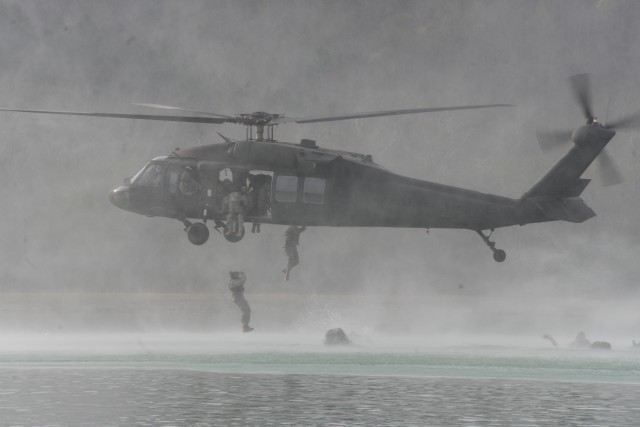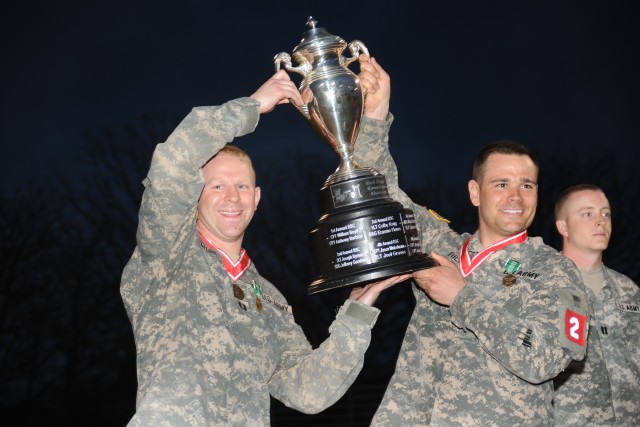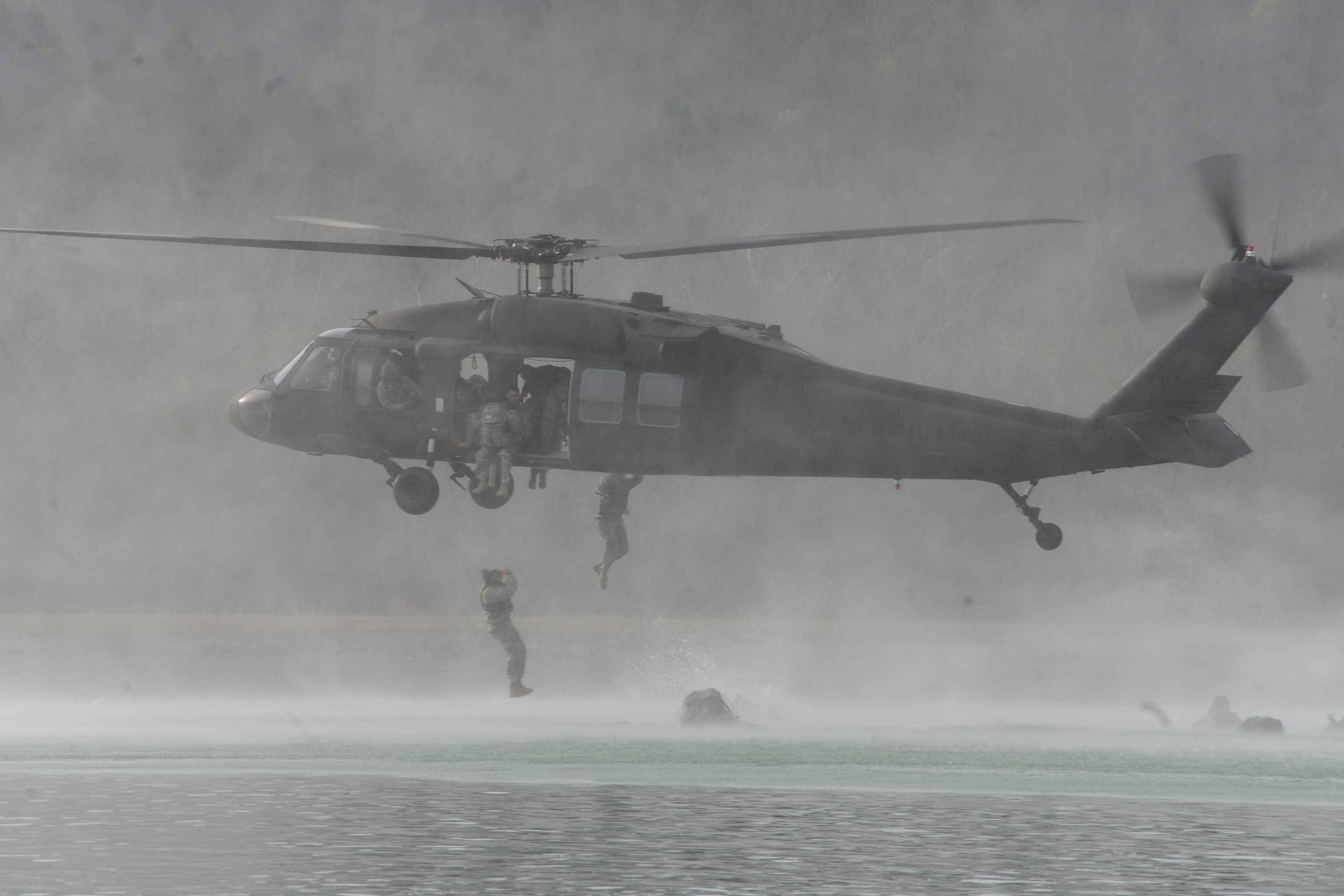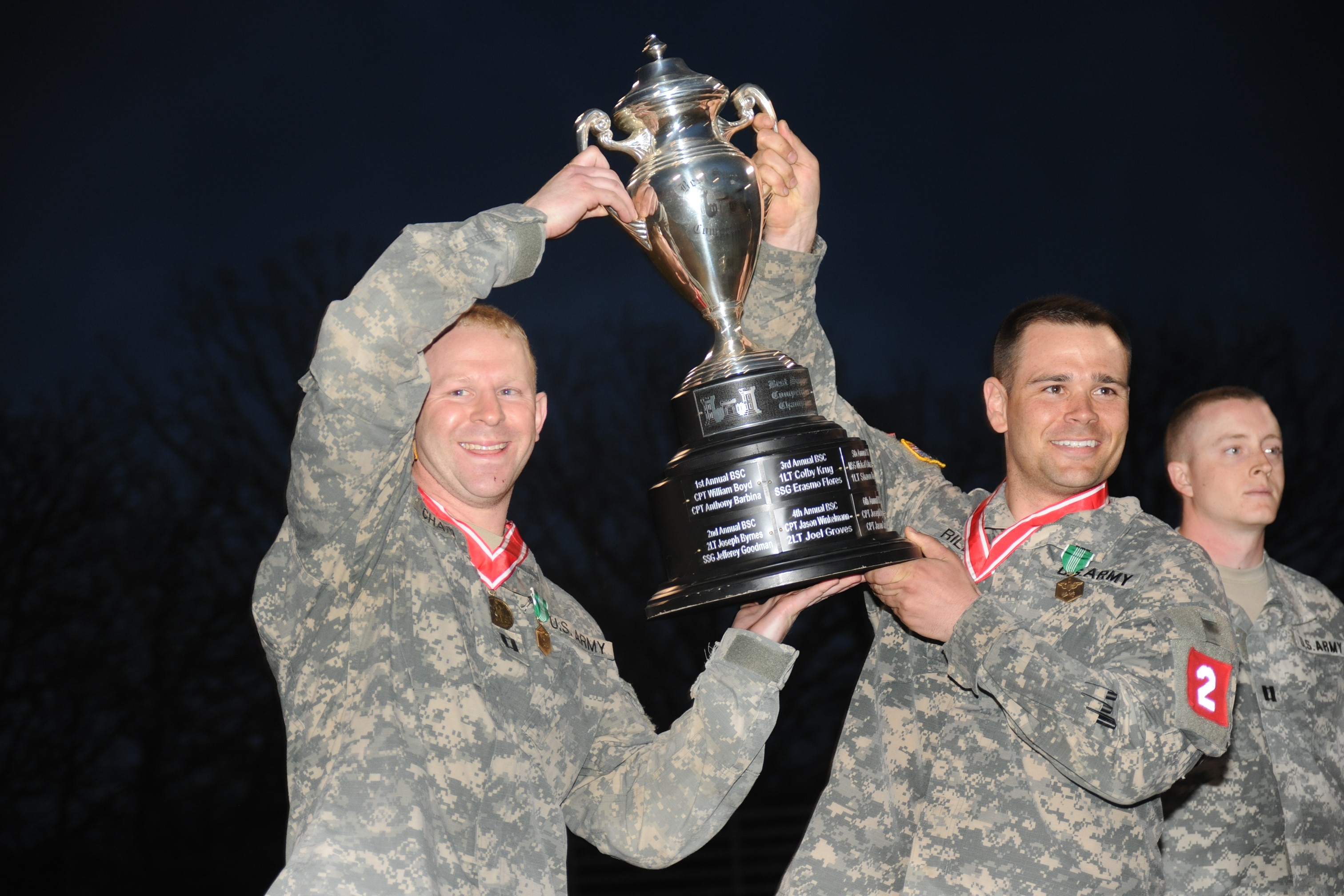FORT LEONARD WOOD, Mo. (Army News Service, May 11, 2011) -- The Best Sapper Competition is 56 hours of grueling physical and mental tests designed to harvest the best Sappers the U.S. military has to offer.
This year's competition finished April 9, 2011, at Fort Leonard Wood, Mo., and resulted in two Soldiers named 2011 Best Sapper.
Competition winners Capt. John Chambers, with the Engineer Captains Career Course, and Capt. Joe Riley, commander of Company B, 554th Engineer Battalion, have been working on projects together since they were students at West Point.
"He is a good friend of mine and a great partner," Chambers said.
A Sapper is "considered an elite combat engineer" in the Army, and may perform any of a variety of combat engineering duties such as bridge-building, laying or clearing minefields, demolitions, field defenses as well as building, road and airfield construction and repair. A modern Sapper's tasks involve facilitating movement and logistics of allied forces and impeding that of enemies.
Riley had no doubts Chambers was the right choice as his teammate for the Best Sapper competition.
"He has such a great base knowledge of all this stuff. Anything I didn't know he did. Out of the two of us, I think John was the stronger one. He technically and tactically knew all of his stuff really well," Riley said.
In all, 37 teams showed up to compete. The competition kicked off with a non-standard physical training test, including a 3-mile buddy-run complete with individual body armor and small arms protective insert plates.
Then the teams mounted a UH-60 Black Hawk helicopter for a helocast and frigid 54-degree swim.
"Jumping out of the helicopter was awesome, but I wasn't looking forward to the swimming," Riley said.
After the helocast, the teams trudged to seven challenges called the Round Robin, which were scattered across Fort Leonard Wood.
"The ruck march on Thursday between the events was the hardest for me because I was wearing a 75-pound ruck, trying to get up hills to the next site, and we were being timed -- it was killer," Riley said, "I couldn't wait for that day to be over with. The distances just kept seeming to grow, and the tents just seemed to get farther and farther away."
The first evening of competition also included a six-hour land navigation challenge, which kept the teams awake late into the night.
On the second day of competition, only the top 20 teams partook in the "Sapper Stakes," which was a series of eight new challenges.
"By the time we got to Sapper Stakes, the remaining 20 teams were the most proficient," said Sgt. 1st Class Steven Laire, sapper leader course and senior training management noncommissioned officer. "The last two days will not only show the most qualified Sappers, but the ones who are still staying mentally competent at the same time they are not letting their physical torture beat them down."
That evening, competitors were again kept from the comfort of their beds as they had four-hours to complete a standard Sapper march.
Just ten teams started the final day of competition with rain and an "x-mile run" -- the actual mileage is kept secret from the competitors. The run includes 10 stations of physically demanding tasks.
During the Best Sapper competition, the winning team pushed through with only about three hours of sleep.
"We just got 20-minute naps here and there," Chambers said.
The last couple of hours were the worst for Chambers.
"The hardest event for me was the x-mile run, because we had already gone so many miles at that point. Having it at the end, with no sleep, was not fun," Chamber said.
Chambers said they remained consistent during the competition, but he was still stunned to hear their names called as the winning team.
"We had a good feeling that we had done well, but the team from Fort Bragg had dominated us in all of the physical events, and we knew they were pretty tough competitors," Chambers said. "We were surprised."
1st Lt. Jonathan Kralick and 1st Lt. Tyler Knox, Company A, 3rd Brigade Special Troops Battalion, 82nd Airborne Division, Fort Bragg, N.C., took second place.
Third place went to the Artic Warriors from Joint Base Elmendorf-Richardson, Alaska, Capt. Douglas Droesch, 4th Brigade Combat Team, 25th Infantry Division and Staff Sgt. Jacob Matson, Headquarters and Headquarters Company, 425th 3rd Brigade, Special Troops Battalion.
The winning team said they were sore from competition, but Laire said the competition is designed to be tough.
"We are looking for not only the Soldier who is the strongest and most physically fit but the Soldier that has a good balance of physical fitness combined with the knowledge of the skills that it takes to be a Sapper in today's Army," Laire said.
Related Links:
Army.mil: Inside the Army News






Social Sharing